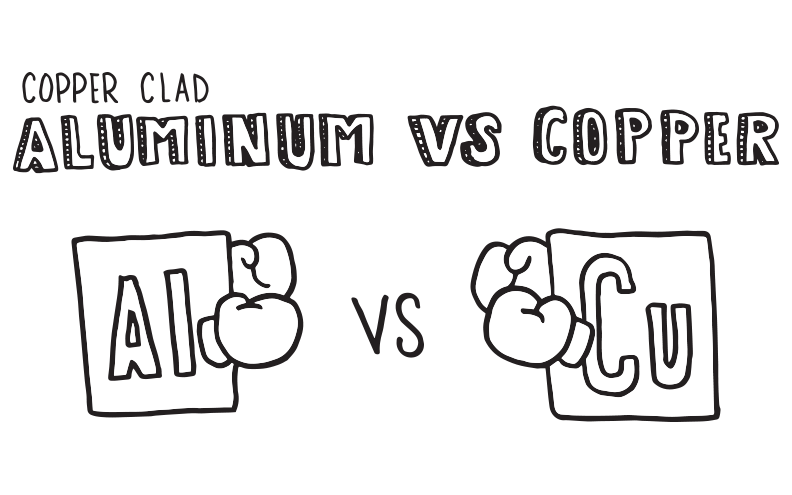- Jan 17, 2017
- 16,391
- 27,519
Notes: subject to updating .. notes from another forum .. consolidating here ..
Flat cables have very thin wires :
Wires are super thin, thus not intended for PoE / Power over Ethernet.
For PoE you want to go with 23 or 24 AWG cat5e / 6, copper wires not CCA wires ..
If you are running wires in the attic or in-wall look for a cable which is properly rated for in-wall.
also, claiming this to be cat7 certainly is a "stretch" of imagination .. I would even call this a fraudulent description.
note: thinner wires = more resistance, less power can be carried on it, heats up more .. this is why you have minimum AWG gauge for electric wires depending on watts carried ..
In general saving a few dollars on the cable, and creating potential current or future issues for trouble shooting, or rerunning cables is problematic when cost of labor and downtime are included.
CCA - big problem is aluminum ( core of the CCA wires ) is very brittle and more likely to break vs copper wires .. just a big headache when this does happen
32 AWG conductor gauge vs 23 or 24 AWG copper wiring ..
32 AWG has a resistance of 164.1 Ohms per 1k ft
24 AWG has a resistance of 25.67 Ohms per 1k ft
This means the 24 AWG can carry electrical power better, long, further, with less heat vs the 32 AWG wires.
also 32 AWG wires are very thin, and more prone to breakage vs a thicker strained version.
What is the relationship between power and resistance and constant voltage?
( I=V/R ) and ( P=VI) gives (P=V*V/R) as voltage is constant so (Power is inversely proportional to resistance) or (1/R)
CCA is problematic :
Copper-clad aluminum (CCA) conductors have a resistance that is 55-60% higher than copper. If the resistance is not compensated, the voltage drop will be greater for any channel length. CCA is also weaker than pure copper and oxidizes easily
ref:

 www.engineeringtoolbox.com
www.engineeringtoolbox.com

 www.truecable.com
www.truecable.com
Flat cables have very thin wires :
Wires are super thin, thus not intended for PoE / Power over Ethernet.
For PoE you want to go with 23 or 24 AWG cat5e / 6, copper wires not CCA wires ..
If you are running wires in the attic or in-wall look for a cable which is properly rated for in-wall.
also, claiming this to be cat7 certainly is a "stretch" of imagination .. I would even call this a fraudulent description.
note: thinner wires = more resistance, less power can be carried on it, heats up more .. this is why you have minimum AWG gauge for electric wires depending on watts carried ..
In general saving a few dollars on the cable, and creating potential current or future issues for trouble shooting, or rerunning cables is problematic when cost of labor and downtime are included.
CCA - big problem is aluminum ( core of the CCA wires ) is very brittle and more likely to break vs copper wires .. just a big headache when this does happen
32 AWG conductor gauge vs 23 or 24 AWG copper wiring ..
32 AWG has a resistance of 164.1 Ohms per 1k ft
24 AWG has a resistance of 25.67 Ohms per 1k ft
This means the 24 AWG can carry electrical power better, long, further, with less heat vs the 32 AWG wires.
also 32 AWG wires are very thin, and more prone to breakage vs a thicker strained version.
What is the relationship between power and resistance and constant voltage?
( I=V/R ) and ( P=VI) gives (P=V*V/R) as voltage is constant so (Power is inversely proportional to resistance) or (1/R)
CCA is problematic :
Copper-clad aluminum (CCA) conductors have a resistance that is 55-60% higher than copper. If the resistance is not compensated, the voltage drop will be greater for any channel length. CCA is also weaker than pure copper and oxidizes easily
ref:

Copper Wire - Electrical Resistance vs. Gauge
Gauge, weight, circular mils and electrical resistance in copper wire.

Copper Clad Aluminum vs Copper: The Ultimate Test
If you read my previous blog, then you know that Copper Clad Aluminum (CCA) is bad...very bad. Industry and regulatory bodies only approve of solid or stranded copper, even for Ethernet cable.

